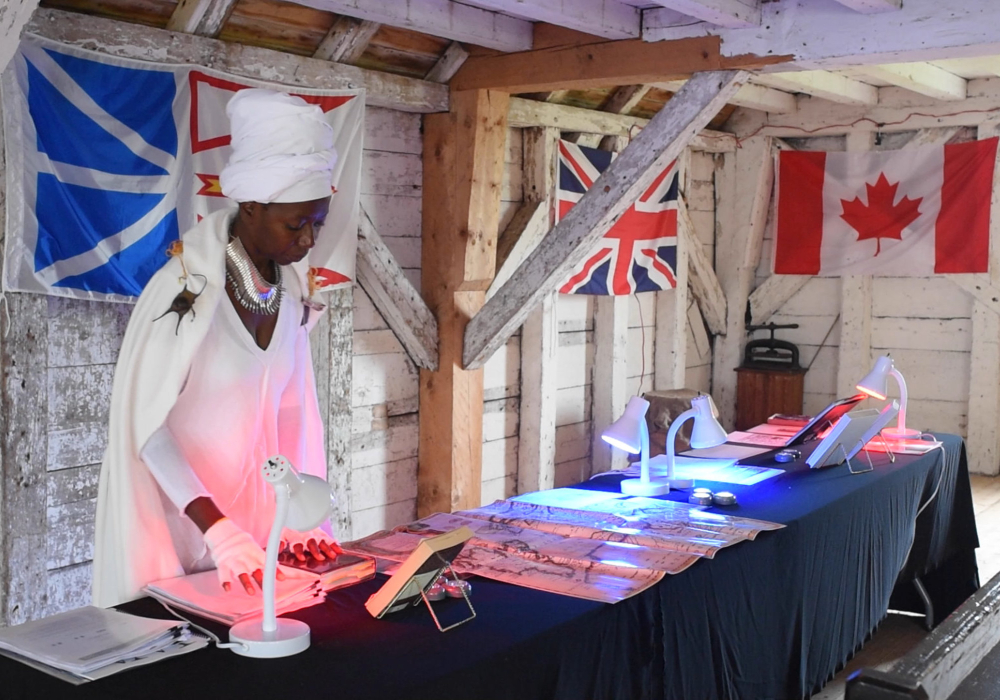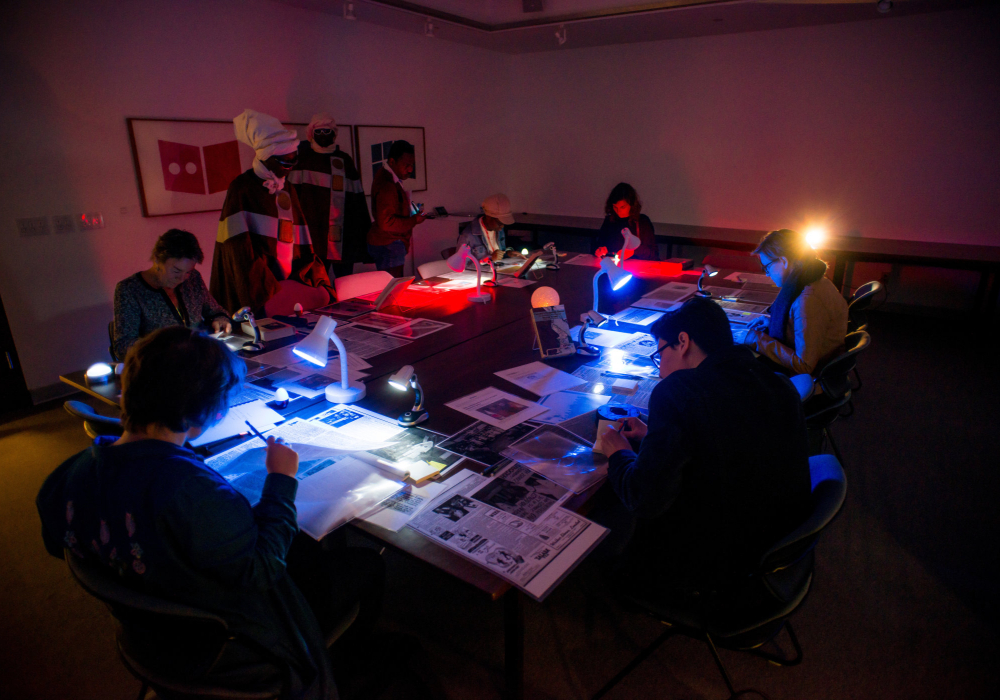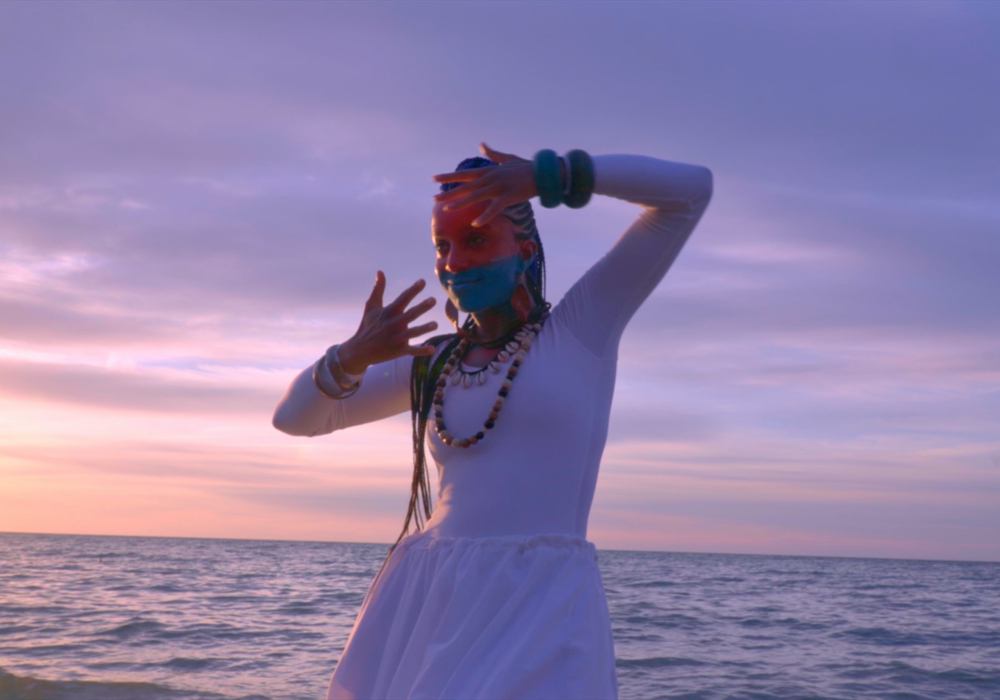As the vibrant fall season begins, the Art Museum at the University of Toronto will unveil a significant exhibition that delves deep into the underexplored narratives of Canada's past. Titled Otherworld, this exhibition marks the first major institutional solo show by acclaimed artist Camille Turner, running from September 4, 2024, to March 22, 2025. With Otherworld, Turner invites audiences on a journey through space and time, exploring Canada’s entanglement in the transatlantic slave trade—a history that remains largely obscured in the national consciousness.
Camille Turner's artistic journey: A visionary path
Camille Turner’s journey as an artist is deeply intertwined with her own experiences of migration and displacement. Born in Kingston, Jamaica, and now based between Los Angeles and Costa Rica, Turner has spent decades challenging and transforming how we perceive Black history within the Canadian narrative. Her work spans multiple disciplines, including performance, photography, installation, and digital media, all of which converge to create a powerful, immersive experience that defies traditional boundaries of art and history.
Turner's work is rooted in her innovative Afronautic methodology—a framework she developed that draws from Afrofuturism, critical storytelling, and Black radical imagination. Afronautics, as Turner describes it, is an approach that transcends linear time, instead allowing for a non-linear exploration of history that acknowledges and brings to the forefront the voices and experiences that have been silenced or erased. This methodology is not just about looking back at the past; it is about imagining alternative futures, where the legacies of oppression are confronted and dismantled.
 Camille Turner, film still of Afronautic Research Lab: Newfoundland, 2019. 06:19, video. Filmed and edited by Brian Ricks. Courtesy of the artist.
Camille Turner, film still of Afronautic Research Lab: Newfoundland, 2019. 06:19, video. Filmed and edited by Brian Ricks. Courtesy of the artist.
Over the years, Turner's work has gained significant recognition for its transformative examination of Black history within the Canadian national narrative. She has been featured in major exhibitions across Canada and the United States, where her work has been celebrated for its ability to challenge dominant narratives and provide space for marginalized voices. Her unique approach to art and history has earned her numerous accolades, including the prestigious Toronto Biennial Artist Prize in 2022 and a growing reputation as one of her generation's most innovative and impactful artists.
The Significance of Otherworld: Uncovering hidden histories
Otherworld is the culmination of Camille Turner's extensive research and artistic practice. It offers a profound and immersive exploration of Canada’s overlooked involvement in the transatlantic slave trade. The exhibition invites visitors to embark on a non-linear journey through history, where time and space are fluid, and the past resonates powerfully with the present.
The title Otherworld reflects Turner's Afronautic research methodology, which combines elements of Afrofuturism with historical inquiry to uncover the gaps, silences, and absences in the historical record. The exhibition takes visitors on a journey through these hidden histories, creating a space where the erasure of Black experiences is made visible and where the lingering ghosts of colonial violence are acknowledged and confronted.
 Camille Turner, Afronautic Research Lab, 2016 - present. Installation view and Performance at Artexte, Montreal, 2018. Courtesy of the artist.
Camille Turner, Afronautic Research Lab, 2016 - present. Installation view and Performance at Artexte, Montreal, 2018. Courtesy of the artist.
Central to the exhibition are two newly commissioned films, Maria and Fly, which take their names from ships built in Newfoundland and involved in the 18th-century slave trade. These films serve as haunting reminders of Canada’s maritime history and its ties to the global atrocities of slavery. Through these works, Turner exposes the deep and often ignored connections between Canada and the broader history of enslavement, challenging the narrative of Canada as a nation untouched by the transatlantic slave trade.
 Camille Turner, film still of Fly, 2024. 4:00, video. Courtesy of the artist.
Camille Turner, film still of Fly, 2024. 4:00, video. Courtesy of the artist.
In addition to these films, Otherworld features installations such as Portals and Pods for Dreaming. Portals examines spaces haunted by the ghostly residues of colonial violence, while Pods for Dreaming offers a peaceful space of respite, inviting visitors to relax, reflect, and imagine new futures. These installations, along with older works by Turner and her collaborators, create a rich tapestry of stories and experiences that speak to the complex and often painful history of Black people in Canada.
The Art Museum’s legacy of challenging narratives
Camille Turner’s Otherworld is the latest in a series of exhibitions at the Art Museum at the University of Toronto that challenge dominant narratives and offer new perspectives on history and identity. Previous exhibitions, such as Deanna Bowen’s God of Gods: A Canadian Play, Kent Monkman’s Shame and Prejudice: A Story of Resilience, and Alanis Obomsawin’s The Children Have to Hear Another Story, have all explored themes of memory, history, and resilience, creating spaces for dialogue and reflection on Canada’s complex past.
With Otherworld, Turner continues this tradition but expands it by introducing her Afronautic methodology, which invites viewers to engage with history in a multidimensional way. This approach not only challenges our understanding of the past but also offers new ways of thinking about the future—ways that are rooted in imagination, creativity, and a deep commitment to justice and equity.
 Camille Turner, Afronautic Research Lab, 2016 - present. Installation view and Performance at the Agnes Etherington Art Centre as part of Artists Against Post Racialism (AARP), 2017. Photography by Garrett Elliott. Courtesy of the artist.
Camille Turner, Afronautic Research Lab, 2016 - present. Installation view and Performance at the Agnes Etherington Art Centre as part of Artists Against Post Racialism (AARP), 2017. Photography by Garrett Elliott. Courtesy of the artist.
A journey of discovery and reflection
As visitors engage with the works in Otherworld, they are encouraged to return multiple times throughout the exhibition’s extended run. The exhibition’s alignment with the academic calendar is intentional, offering opportunities for deeper engagement and contemplation through enhanced programming. Visitors can participate in artist tours, public lectures, and other events that will further enrich the dialogue around Turner’s work and the themes it explores.
The exhibition’s opening on September 4th will be followed by an artist tour on September 7th, offering visitors a unique opportunity to hear from Camille Turner herself about the ideas and stories that inspired Otherworld. These events and the ongoing programming throughout the exhibition’s run are designed to foster a deeper connection between the audience and the work, encouraging reflection, discussion, and a greater understanding of the complexities of Canada’s history.
Looking forward: The transformative power of art
Camille Turner’s Otherworld is more than just an exhibition; it is a powerful statement about the role of art in shaping our understanding of history and identity. Through her Afronautic lens, Turner challenges us to confront our history's silences, acknowledge the ghosts that linger, and imagine new futures where justice and equity prevail.
As the exhibition opens, the Art Museum at the University of Toronto becomes a space where the past, present, and future converge, offering a powerful reminder of the transformative power of art. *Otherworld* invites us all to embark on a journey of discovery, reflection, and imagination, challenging us to rethink our understanding of history and to dream of a more just and inclusive future.
In this way, Otherworld serves as a testament to Camille Turner’s enduring commitment to uncovering hidden histories and amplifying marginalized voices. Through her work, she not only honours the past but also inspires us to take action in the present, reminding us that the stories we tell—and those we choose to silence—shape the world we live in and the futures we create. As visitors leave the exhibition, they are left with a profound sense of the possibilities that lie ahead, powered by the transformative potential of art and the imagination.
Programming
• Exhibition Opening on Wednesday, Sept. 4, from 6-8 pm
• Artist Tour on Saturday, Sept. 7, from 2-4 pm
Gallery hours
Tuesday 12-5 pm
Wednesday 12-8 pm
Thursday 12-5 pm
Friday 12-5 pm
Saturday 12-5 pm
Address
University of Toronto Art Centre
15 King's College Circle
Toronto, Ontario M5S 3H7


